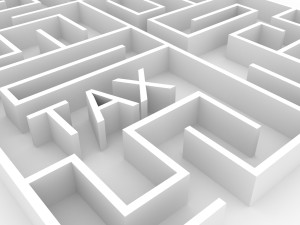If you are a member of a partnership or LLC taxed as a partnership, you should take note of recent changes to the partnership audit rules.
Last winter, Congress passed the Bipartisan Budget Act of 2015 (the “BBA”) which repealed the partnership audit and litigation rules under the Tax Equity and Fiscal Responsibility Act of 1982 (“TEFRA”) and replaced them with a new centralized audit regime that assesses and collects tax at the partnership level. The BBA changes the audit procedures for partnerships (including limited liability companies taxed as partnerships) and affects all tax years beginning January 1, 2018.
Although 2018 seems far off, we recommend planning ahead for the change now by updating your partnership agreements and getting ready for the change in audit procedures. The following is a brief summary of the reasons for the change and the changes themselves. TAX ALERT: PARTNERSHIP AUDIT RULES ARE CHANGING – PART II discusses some workarounds to the new rules and suggested steps that you should take in the coming months.
BACKGROUND
Over the last decade, the formation of limited liability companies (“LLCs”) taxed as partnerships has increased significantly. As you may know, it is not uncommon for an LLC to have multiple members, some of which may be other LLCs which in turn have LLCs as members. These tiered LLCs have proved challenging for the IRS to audit as it has become increasingly difficult to determine who the ultimate business owners of the entities are. In response, Congress passed the BBA, which does away with the old TEFRA audit rules and implements a one-size-fits-most audit procedure.
What’s TEFRA?
The TEFRA audit rules were implemented in 1982 to standardize audit procedures and close tax loopholes. Additional rules for large partnerships were enacted in 1998. Combined, these rules create three tiers of partnership audits:
- Small partnerships (10 or fewer partners, none of whom are pass through entities such as LLCs) are audited at the partner level. This means that although the IRS may examine the partnership return, any adjustments are made to each partner’s individual return. So, if a 2015 partnership return is audited in 2018 and adjustments are deemed necessary, the IRS will adjust each partner’s individual return and collect the additional tax due from the 2015 partners directly.
- Larger partnerships (11 or more partners or small partnerships not eligible for the small partnership audit rules) are subject to the TEFRA audit rules. Under TEFRA, the IRS can conduct a partnership audit at the entity-level and deal with just one designated tax matters partner (rather than each partner individually); however, TEFRA still requires the IRS to collect any adjustment from the partners individually, a daunting and expensive process in light of the complex tiered structure many LLCs have been taking.
- The biggest partnerships (100 or more partners) can elect to be treated as electing large partnerships (“ELPs”). Under the ELP audit rules, any adjustments or assessments occur at the partnership level.
NEW RULES
The BBA is Congress’ attempt to streamline the partnership audit process and shift to the partnership the burden of tracking down and collecting from the individual partners. The main changes the BBA makes are:
- Beginning January 1, 2018, Partnerships – not the individual partners – will be responsible for audit adjustments.
- Taxes due will be assessed in the year of the audit, not the year that is being audited, and will be assessed at the highest individual rate of 39.6% regardless of any deductions available to individual partners.
- Say goodbye to the “Tax Matters Partner” and hello to the “Partnership Representative”. The Partnership Representative:
- will be able to bind the partnership (and therefore the partners) in any audit proceeding;
- does not need to be a partner; and
- if the partnership has not named one, the IRS may select any person as a Partnership Representative.
What’s all this mean?
Under the new rules, if a 2018 partnership return is audited in 2020 and adjustments are made, the IRS will assess those adjustments against the partnership in 2020 regardless of whether the 2018 partners are still partners in 2020. This means that, in the event of a sale or exchange of partnership interests prior to 2020, later partners could bear the burden of tax liability actually incurred by the 2018 partners. Furthermore, unless the partnership agreement expressly addresses the partnership collecting later-assessed taxes from past partners, the current partners will be responsible for replenishing the partnership’s coffers to offset the taxes the partnership must pay.
For more information about how you can elect out of this new partnership audit regime and the next steps you should take, see TAX ALERT: PARTNERSHIP AUDIT RULES ARE CHANGING – PART II.
